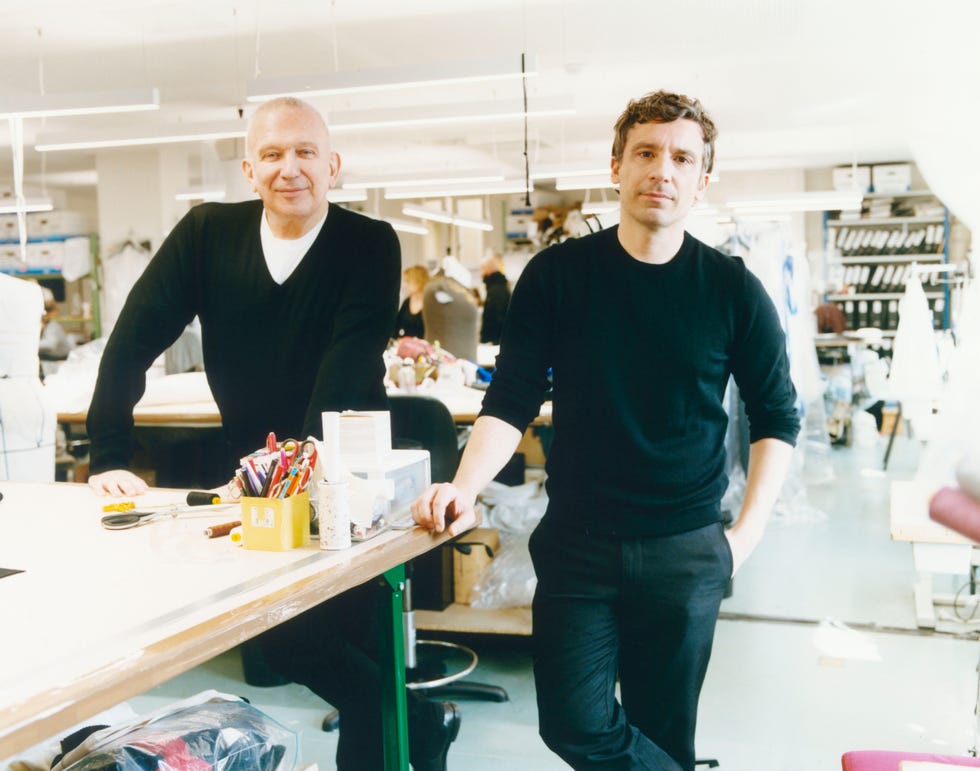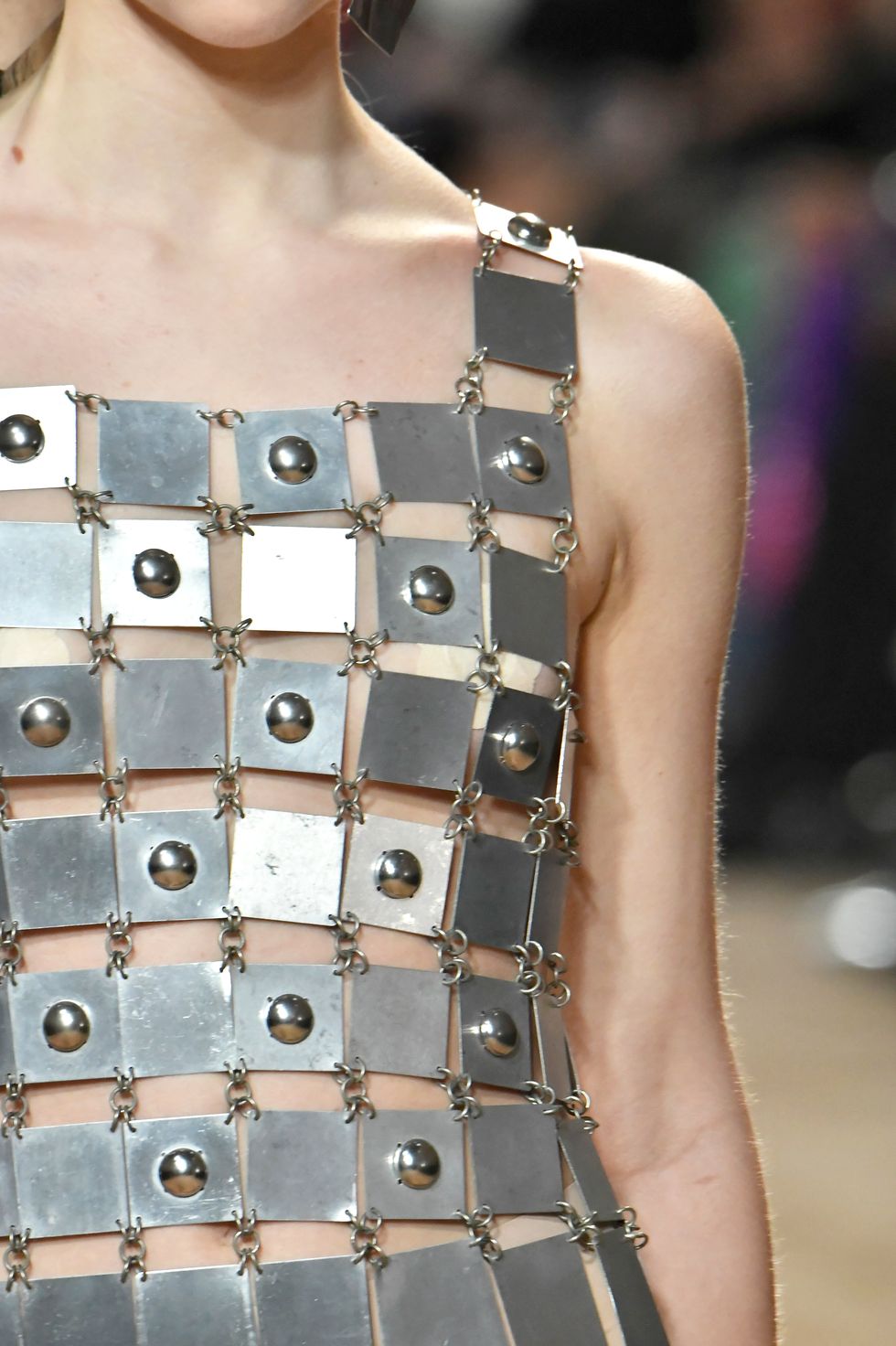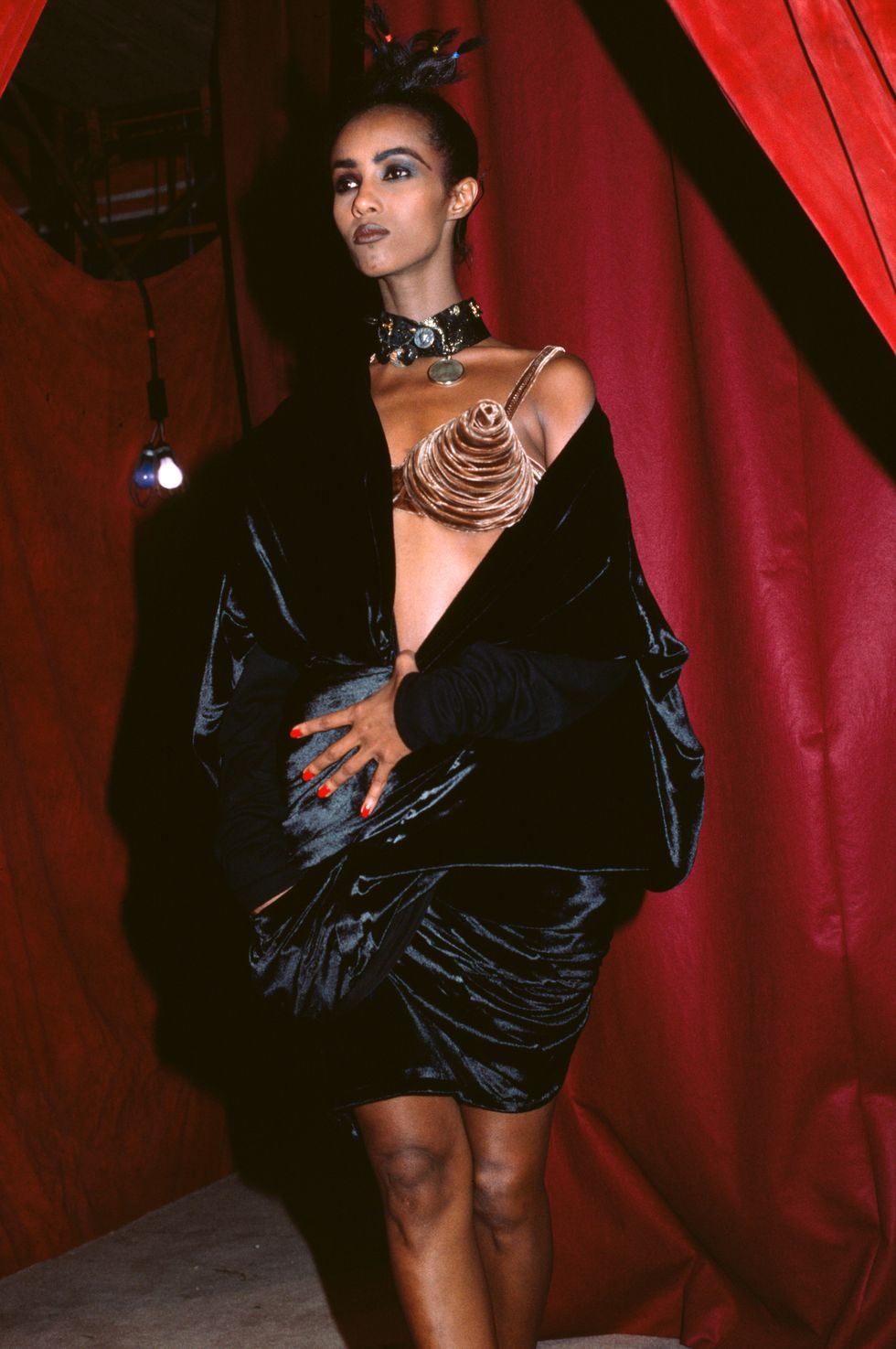Style Points is a weekly column about how fashion intersects with the wider world.
“Wow, look. You’re there!” That was what Julien Dossena told himself when he found himself inside one of the most impressive archives in French fashion history, namely that of Jean Paul Gaultier. The designer first became aware of Gaultier as a child in Bretagne, when he glimpsed him and his colorful, carnival-esque world on TV. “Coming from a background where fashion was really not on the radar, let’s say, it was the first time that I understood it was a job,” Dossena says. “I thought, ‘Oh, that seems like a really nice job.’”
Now, things have come full circle for Dossena. Not only does he have that really nice job, as the creative director of Rabanne; he’s Gaultier’s latest guest designer. Dossena follows in the footsteps of previous talents Haider Ackermann, Glenn Martens, Chitose Abe, and Olivier Rousteing, who have been given free rein to interpret the houses codes in their own style. Ten days before showtime, he beams in from a mirrored atelier, where his gesticulating hands are multiplied over and over as he narrates the process.
This is Dossena’s first foray into couture, though he notes that his designs for Rabanne, where he’s been since 2014, are often quite handwork-intensive—think of the intricate chain-mail pieces the house is known for. The irony being that Paco Rabanne came on the scene in the ’60’s, at a time, as Dossena himself admits, when “couture was dying, in a way, because it was not relevant for people.” Rabanne and his compatriots André Courrèges and Pierre Cardin were pioneers of democratizing fashion; they wanted to dress “the people in the street and the new generation,” Dossena says. Now, of course, couture feels like “the only space left in fashion to be fully innovative, in a way. Weirdly, it became the opposite of what designers thought about it in the ’60’s or ’70’s.” Indeed, with younger and more experimental entrants over the past few seasons, the ages-old tradition has never felt more cutting-edge.
Working not just on couture, but on couture with Gaultier, was a dream come true for Dossena. Not only is his name practically synonymous with fashion in France, but Gaultier became a pop-culture juggernaut as one of the first designers to have pop stars perform on his runway. He was early to the upcycling game, too, often cutting up and re-using pieces from past collections.
Most of all, Dossena fell in love with the storytelling, and the characters who appeared on the runway, as much as he did with the clothes. Gaultier’s approach, he says, “is more like sociology in a way.” One of the seasons he cites as a major inspiration was the fall 1984 Barbès collection, named after the Paris neighborhood. Yes, it contained iconic pieces like the cone bra made famous by Madonna. But there were also “beanies, oversized sweatshirts with holes, big pants, and sneakers,” well before Seattle grunge and its slow trickling-up to the runway. Dossena felt like he was “talking [about] real people, to real people.” Gaultier’s spring 1988 collection, La Concierge Est Dans L’Escalier, played with the archetypal French character of the building concierge, mixing tailored suiting with workaday aprons.
There was a difference, though, between poring over pictures, imagining himself there, and “being able to touch and feel the real thing” in the archives. One standout was a dress in the house’s signature sailor stripe, but embroidered with feathers. Dossena loved seeing “pieces that feel so relevant now,” he says. “Sometimes I was putting something [to] the side saying, I can’t work on that, because I will not do it better.”
Throughout the process, he and Gaultier had “great conversations, because he is the most kind. He can jump from one topic to another…the TV show from last night, that couture collection from ’67, the Bergman movie.” (They talked about fashion, but usually, as he puts it, “life took over” as a topic.) Most of all, he appreciated that Gaultier offered him complete freedom to interpret his vision. And that he got the opportunity to work with the petits mains in the atelier. “They are used not [just] to couture, [but] to Jean Paul Gautier couture. They are shaped and taught by him, his hand, his mind. There are no boundaries on anything,” he says. “[It’s] the most luxurious way of working: ‘Nothing is impossible. We can make it, and we’re going to make it.’”
The resulting collection, being shown today, is a tribute to those characters he grew up seeing on the catwalk. “You can feel Paris…Jean Paul Gaultier’s Paris,” he says. “It’s people who you want to be, that you know but don’t know.” He also drew on Gaultier’s vintage legacy, “that love of flea markets, of mixing high and lows. Playing on that: old jeans mixed with the most exquisite silk blouse.”
He’s keeping things small, to evoke the early shows the designer held in the intimate Galerie Vivienne. “I really wanted people to be touched by the dresses,” Dossena says, speaking quite literally. “There are going to be embroideries that just touch your knees,” as the models walk by, “so that you can see closely all the work and the craftsmanship that are involved in those looks.”
And with that teaser, he’s back to the atelier. “We’ve still got ten hard work days to come,” he says brightly. “But I’m leaving with new friends.”

ELLE Fashion Features Director
Véronique Hyland is ELLE’s Fashion Features Director and the author of the book Dress Code, which was selected as one of The New Yorker’s Best Books of the Year. Her writing has previously appeared in The New York Times Magazine, The New Yorker, W, New York magazine, Harper’s Bazaar, and Condé Nast Traveler.







